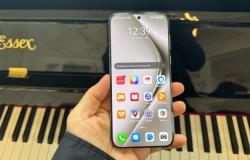QDEL screens promise to replace OLEDs, first in premium TVs and then in the budget range.
Even though OLED TVs have become almost affordable, the technology is still too expensive to allow for widespread adoption, and it’s not entirely free of drawbacks either. Especially in the case of cheaper OLED TVs, the brightness of the screen is somewhat lower than in premium models, the image does not look quite so “vibrant” and the risk of premature aging of the screen through the manifestation of the burn-in effect cannot be neglected. Micro LED technology promises to eliminate these disadvantages by providing a brighter image that does not “wear out” over time. But the cost issue is not resolved, with display manufacturers failing to find a cost-effective way to manufacture Micro LED displays on a large scale.
So they developed QD-OLED screens, borrowing the Quantum Dot technology originally developed to improve brightness and color vibrancy in LCD-type screens. In the case of QD-OLED screens, the innovation that takes the form of a filter applied over the OLED matrix allows the dramatic improvement of their brightness and color. Specifically, instead of using specialized organic compounds to achieve the desired color, you apply a Quantum Dot filter that converts the OLED light into the shade you need. Thus, the OLED screen can only use that organic compound that allows the most efficient operation in terms of energy consumption, while also maximizing longevity. The result is that QD-OLED screens can be brighter and more visually pleasing, while consuming less power.
Coming as an evolved version of QD-OLED screens, those with QDEL technology do not need a separate OLED matrix to act as a light source. Instead, the QDEL screen is its own light source, with Quantum Dot technology embedded in every pixel of the OLED screen.
QDEL technology is seen as one of the most promising developments for consumer displays, the spread of which is likely to gain momentum over the next two years.
QDEL was also referred to as NanoLED, as it was originally named by Nanosys, the Quantum Dot solution provider that developed this technology. QDEL went by other names, such as QLED, before Samsung claimed that acronym for LCD-LED TVs that use Quantum Dot. You may also see QDEL referred to as QD-EL, QD-LED, or EL-QD, depending on the various optimizations and adaptations this technology is likely to receive depending on your preferred use case scenario.
According to David Hsieh, senior director of the display division at research firm Omdia, when it comes to consumer gadgets, QDEL technology is expected to have the biggest impact on TVs, PC monitors and automotive industry. If commercialized and mass-produced, QDEL may have a better cost-performance ratio than conventional OLED displays, but remains competitive with LCD-LED solutions in terms of cost-performance ratio.
QDEL displays have pixels made up of a red quantum dot subpixel, a green quantum dot subpixel, and, unlike today’s QLED and QD-OLED displays, a blue quantum dot subpixel. QDEL screens use the same Quantum Dot cores also found in QD-OLED solutions and QLED products, but “The functionalization of the outer layer of [punctelor cuantice] must be changed to make it compatible with each display architecture. , but the heavy-duty cores are pretty much the same in all of them.”
Because QDEL pixels generate their own light and can therefore turn off completely, QDEL screens can deliver the same deep blacks and rich contrast that OLED screens are prized for. But with the adaptation of Quantum Dot technology for direct viewing, there is the potential to generate a wider color palette than we’ve had before in consumer displays. With fewer layers and components, we also have the potential to reduce costs while increasing the longevity of QDEL displays.
The first prototypes of QDEL screens have already been demonstrated by vendors such as Sharp Display, but it could be a while before we see them produced on a large scale. The fact is that the technology is not fundamentally different from OELD, so adapting current production lines for QDEL screens should not be very difficult.






